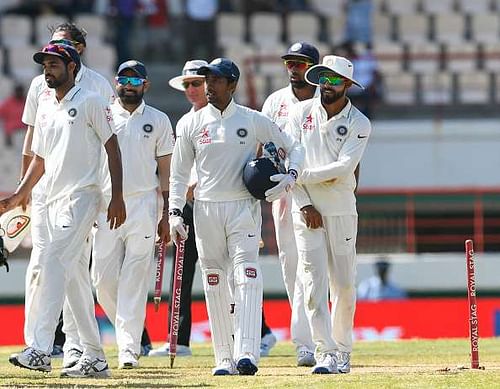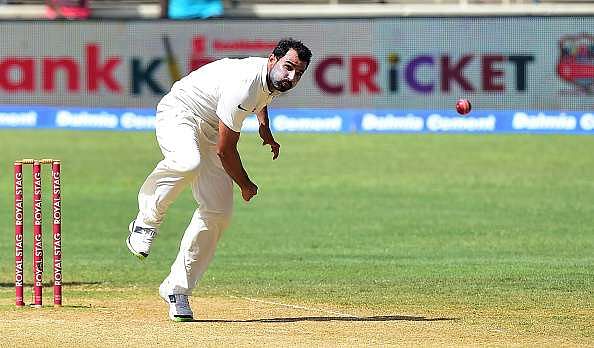
Pirates of the Caribbean 2016: Is this India's best ever bowling attack in Tests?
Darren Sammy must be an embittered man. It’s bad enough that you’re out of the national side, nor do you get to turn out in a stadium named after you. At least the St Lucia native was spared the ignominy of ending up on the losing side in yet another five-day game. Not so for the young captain Jason Holder.
In contrast, Indian Test skipper Virat Kohli was elated at the way things unfolded on the last two days of the third match. His five-bowler theory battled not only the opposition batsmen, but also the weather elements and a pitch that chose to misbehave on odd occasions.
If it was ‘all-rounder’ R Ashwin and wicket-keeper Wriddhiman Saha’s turn to bail out the side in their first innings, Bhuvneshwar Kumar justified the faith of the think tank on the fourth day. Ishant Sharma re-discovered his nip, Mohammad Shami returned to somewhere near his best, and Ravindra Jadeja did some things with the red cherry.
Which leads us to the question: Is this India’s best ever bowling attack in Test cricket?
Signs of a pace pack coming together
What this tour has shown so far is a glimpse of a fast bowling pack coming together as a single unit. Seldom have Indian squads chosen to pick a playing eleven with three faster men – given that batting has always been their strength.
Having a frontline pacer like Umesh Yadav has only strengthened Kohli’s core belief of a razor-sharp attack. Hitting speeds upwards of 150 km/hr, the Vidarbha native has this knack of attacking the stumps and generating late swing. He might leak runs at times, but is capable of turning it around with extremely clever spells.
Yadav’s pace opens it up for the likes of Bhuvneshwar Kumar, Mohammad Shami and Ishant Sharma to combine forces and decimate rival line-ups.
The return of Bhuvneshwar Kumar and Mohammad Shami
The two UP seamers (Shami hails from Amroha while Kumar is from Meerut) have contrasting styles, but the only thing common is their ability to swing the ball.
In Bhuvi’s case, the Duke ball allows him that flexibility of generating exactly the amount of movement needed to keep the batsmen guessing. It is precisely this art of his that allowed him to dismiss Jermaine Blackwood and Marlon Samuels in the first innings.
He is not your typical, brash young tearaway. He’s methodical, aware of his limitations, and bowls well within himself. At the Beausejour, his skiddy seam-ups and fuller deliveries had the Calypsos hopping all over the place. In all respects, Bhuvneshwar Kumar is the ideal foil to the speed merchants in the side.
On the other hand, Shami is slowly re-settling into his comfort zone since his debut three years ago. Deception is one of his main strengths, and like Yadav, pace is a chief component of his arsenal.
The difference between them lies in the fact that the Delhi Daredevils strike bowler can generate plenty of conventional and reverse swing from those 140 km/hour deliveries. He also uses the bouncer to devastating effect – although, on tracks in New Zealand, Australia and South Africa, this can prove to be counter-productive.
I’d rather have Bhuvneshwar and Shami as the opening bowlers instead of either of them coming on as first change. Because the latter has the uncanny ability to grab early wickets, he needs to be in the thick of things.


